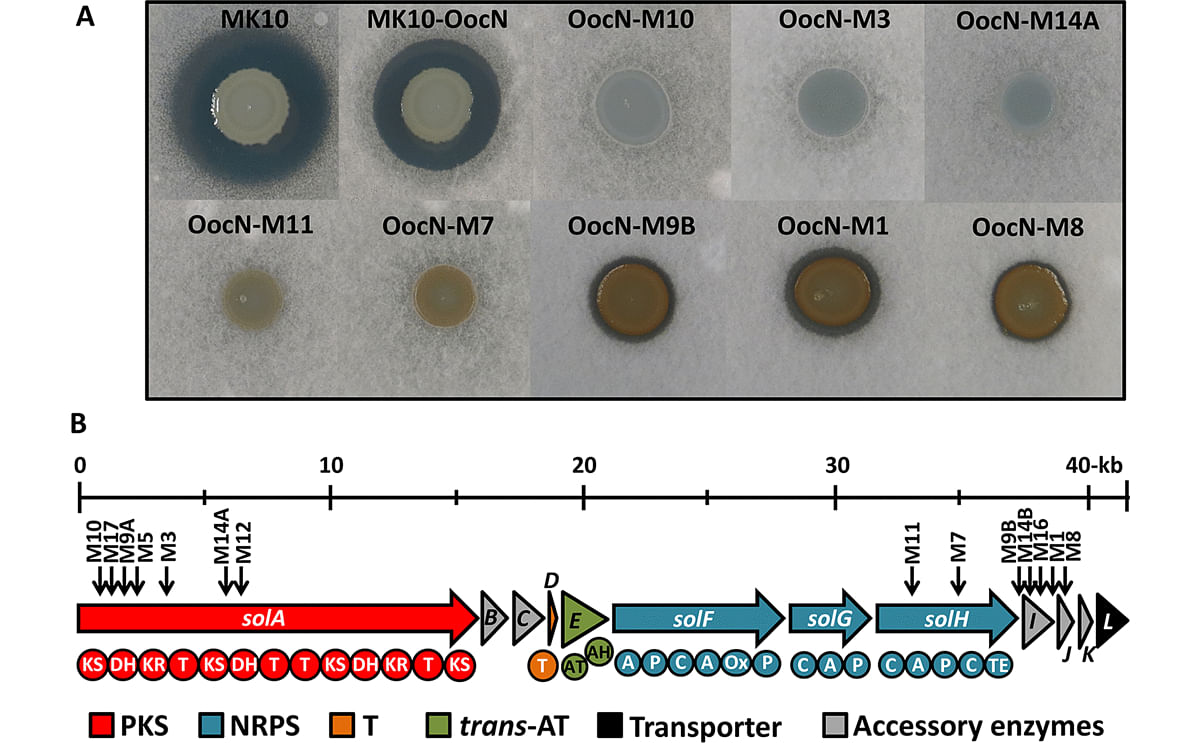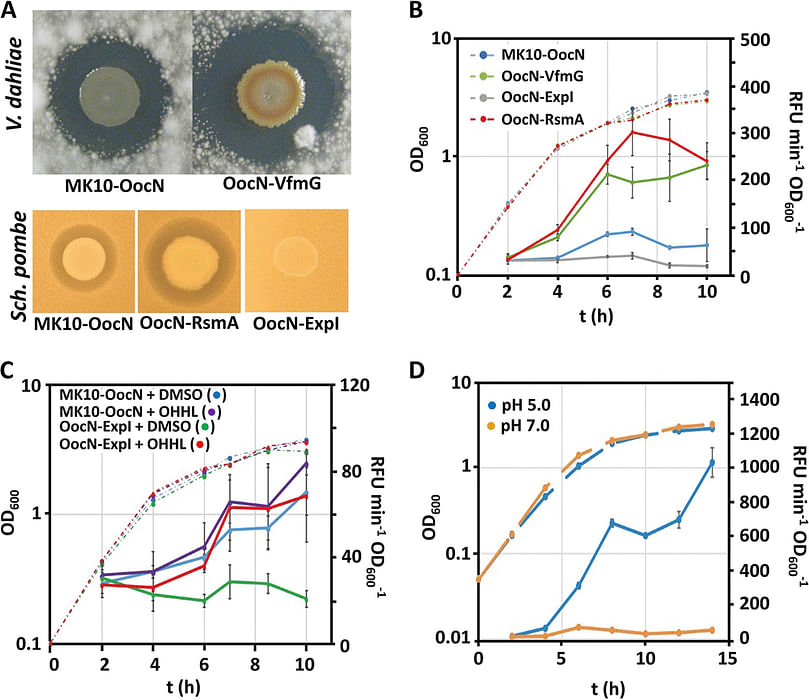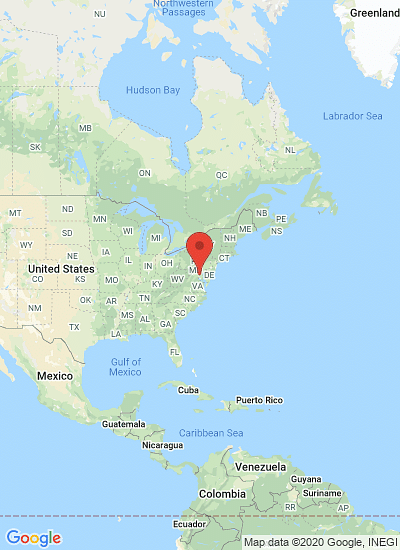Identification and characterization of a novel hybrid PKS/NRPS antifungal gene cluster in Dickeya solani MK10. (A) Antifungal activity against Verticillium dahliae of MK10 and derivative strains with mutations in the oocydin A and the solanimycin (sol) biosynthetic clusters.
New Antibiotic Solanimycin discovered in a Pathogenic Bacterium in Potatoes (Dickeya solani)

The growing threat of antimicrobial resistance has led researchers to search for new compounds everywhere. This week in mBio, a multinational team of researchers in Europe report the discovery of a new antifungal antibiotic named solanimycin.
The compound, initially isolated from a pathogenic bacterium that infects potatoes, appears to be produced by a broad spectrum of related plant pathogenic bacteria.
Solanimycin acts against a wide range of fungi known to infect and wreak havoc on agricultural crops, according to the researchers. In lab studies, the compound also acted against Candida albicans, a fungus that occurs naturally in the body but can cause dangerous infections. The results suggest that solanimycin, and related compounds, could be useful in both agricultural and clinical settings.
Soil microbes, especially from the Actinobacteria phylum, produce most therapeutic antibiotics used today. The new discovery suggests plant-based microorganisms are worth a closer look, especially as crops develop resistance to existing treatments, says microbiologist Rita Monson, Ph.D., at the University of Cambridge.
She co-led the study with molecular microbiologist Miguel Matilla, Ph.D., at the Spanish Research Council’s (Estación Experimental del Zaidín), in Granada.
Rita Monson, microbiologist at the University of Cambridge:
"We have to look more expansively across much more of the microbial populations available to us."
The pathogenic potato bacterium Dickeya solani, which produces solanimycin, was first identified more than 15 years ago. Researchers in the lab of molecular microbiologist George Salmond, Ph.D., at the University of Cambridge, began investigating its antibiotic potential about a decade ago.
Miguel Matilla, Ph.D., at the Spanish Research Council’s (Estación Experimental del Zaidín), in Granada:
"These strains emerged rapidly, and now they are widely distributed."
Solanimycin isn’t the first antibiotic discovered from the microbe. In previous work, researchers found that D. solani produces an antibiotic called oocydin A, which is highly active against multiple fungal plant pathogens.
Those previous discoveries, together with the analysis of the genome of the bacterium, hinted that it might synthesize additional antibiotics, Matilla said, also with antifungal potential.
That hint paid off: Matilla, Monson, Salmond and their colleagues found that when they silenced the genes responsible for the production of oocydin A, the bacterium continued to show antifungal activity.
That observation led to the identification of solanimycin and the identification of the gene clusters responsible for the proteins that make the compound.
The researchers found that the bacterium uses the compound sparingly, producing it in response to cell density. An acidic pH environment—as that present in a potato—also activates the solanimycin gene cluster. Monson said it almost looks like a clever protective mechanism.
Rita Monson:
"It’s an antifungal that we believe that will work by killing fungal competitors, and the bacteria benefit so much from this. But you don’t turn it on unless you’re in a potato."
Monson said the researchers have begun collaborating with chemists to learn more about the molecular structure of solanimycin and better understand how it works. Then, she and Matilla said they hope to see continued testing of the compound in plant and animal models.
Miguel Matilla:
"Our future steps are focused on trying to use this antibiotic antifungal for plant protection."
The research team see the discovery as an encouraging sign that plant pathogens—like D. solani—could be coaxed to make compounds that may be used against diseases in plants and people.
Miguel Matilla:
"We have to open to the exploration of everything that’s out there to find new antibiotics."






